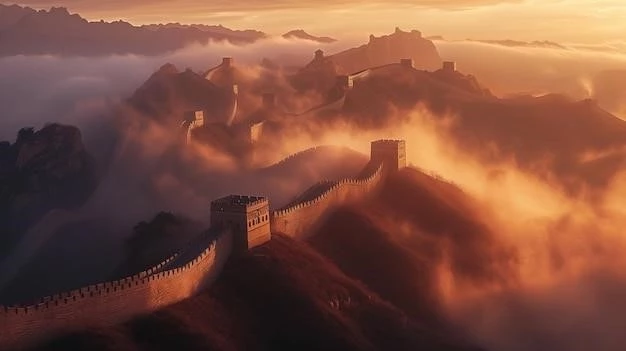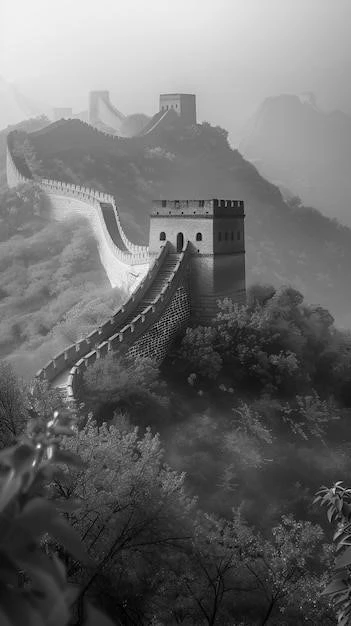The Great Wall of China: A Monumental Feat of Engineering
The Great Wall of China, a UNESCO World Heritage site since 1987, stands as a testament to human ingenuity, perseverance, and architectural prowess․ It is not merely a wall, but a vast network of fortifications, stretching across thousands of miles, embodying centuries of Chinese history and culture․
A History Forged in Stone and Earth
The Great Wall’s construction spans millennia, with the earliest sections dating back to the 7th century BC during the reign of the Qin Dynasty․ The initial purpose was to protect various Chinese states from invading nomadic tribes․
It was Emperor Qin Shi Huang, the first emperor of a unified China, who initiated the ambitious project of connecting and extending these fragmented walls․ He envisioned a continuous barrier against the Xiongnu people from the north, employing hundreds of thousands of soldiers, peasants, and even convicts in its construction․
Subsequent dynasties, particularly the Han, Sui, and Ming, further expanded and fortified the wall․ Each dynasty left its mark on the structure, incorporating different architectural styles and materials based on the prevailing technology and resources․
An Engineering Marvel of Unprecedented Scale

The Great Wall’s immense scale is truly awe-inspiring․ While often described as a single continuous wall, it is more accurately characterized as a network of interconnected walls with a combined length exceeding 13,000 miles․
The wall snakes its way across diverse terrain, including mountains, deserts, and grasslands, adapting to the challenging topography․ Its construction involved meticulous planning and innovative engineering solutions for its time․
- Materials: Building materials varied depending on local availability․ Stone was prevalent in mountainous regions, while rammed earth, consisting of packed soil, lime, and other materials, was common in plains․ Bricks were also used extensively, particularly during the Ming dynasty․
- Construction Techniques: The construction process involved a combination of human labor and ingenuity․ Workers used simple tools like shovels, baskets, and rollers to transport and compact materials․ Sophisticated scaffolding and pulley systems were employed for lifting heavy stones and bricks․
- Defensive Features: The Great Wall incorporated various defensive features, including:
- Watchtowers: Positioned at regular intervals, these towers provided elevated vantage points for surveillance and served as communication hubs, using smoke signals or beacons to relay messages quickly․
- Garrison Stations: Larger fortifications housed troops and supplies, enabling the wall’s defenders to withstand prolonged sieges․
- Battlements and Embrasures: These defensive structures on top of the wall provided cover for archers and other soldiers to attack approaching enemies․
More Than Just Bricks and Stone: Symbolism and Legacy
The Great Wall transcends its physical form to embody profound cultural and symbolic meaning:
- National Identity: For centuries, the Great Wall has served as a potent symbol of Chinese strength, unity, and resilience․ It represents the collective effort of generations to protect their civilization․
- Imperial Power: The wall’s construction was often used by emperors to project power and authority․ It served as a physical reminder of the dynasty’s reach and control over its territory․
- Cultural Exchange: While intended as a barrier, the Great Wall also facilitated cultural exchange between China and nomadic cultures․ Trade routes developed along its length, fostering the exchange of goods, ideas, and traditions․
Preservation for Future Generations
Today, the Great Wall faces challenges from erosion, vandalism, and the pressures of tourism․ However, the Chinese government and various organizations are actively engaged in preservation efforts:
- Restoration Projects: Sections of the wall are being restored using traditional techniques and materials to preserve their historical authenticity․
- Tourism Management: Efforts are underway to manage tourism sustainably, balancing accessibility with the need to protect this fragile site․
- Public Awareness: Campaigns are raising awareness about the importance of preserving the Great Wall for future generations, fostering a sense of shared responsibility․
The Great Wall of China stands as an enduring symbol of human ambition, ingenuity, and the power of collective endeavor․ It is a testament to the enduring legacy of Chinese civilization, captivating visitors from around the world with its grandeur and historical significance․ As a UNESCO World Heritage Site, its preservation is crucial, ensuring that this architectural marvel continues to inspire awe and wonder for generations to come․











